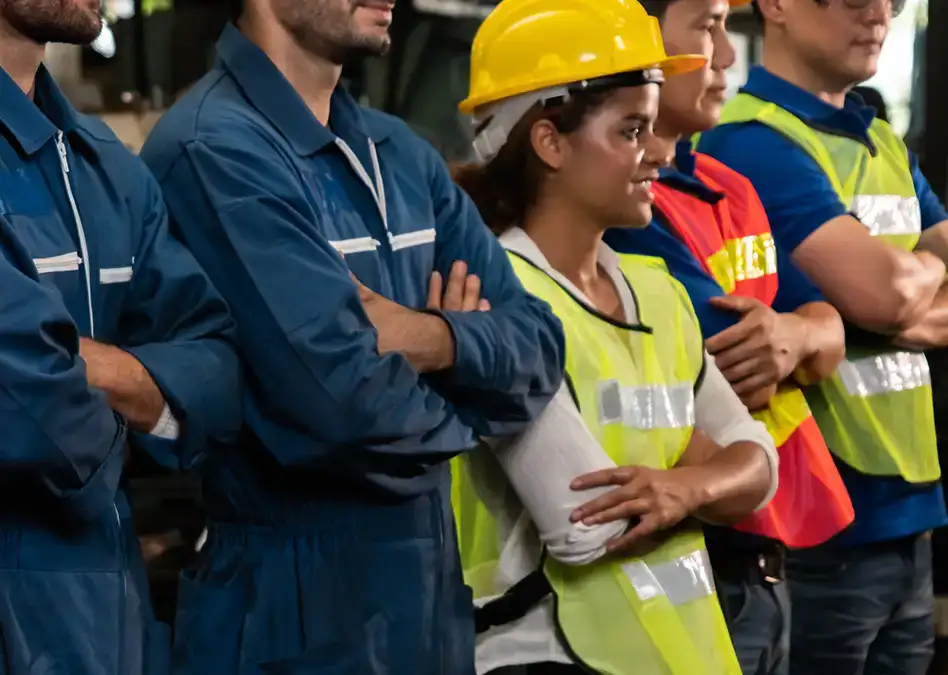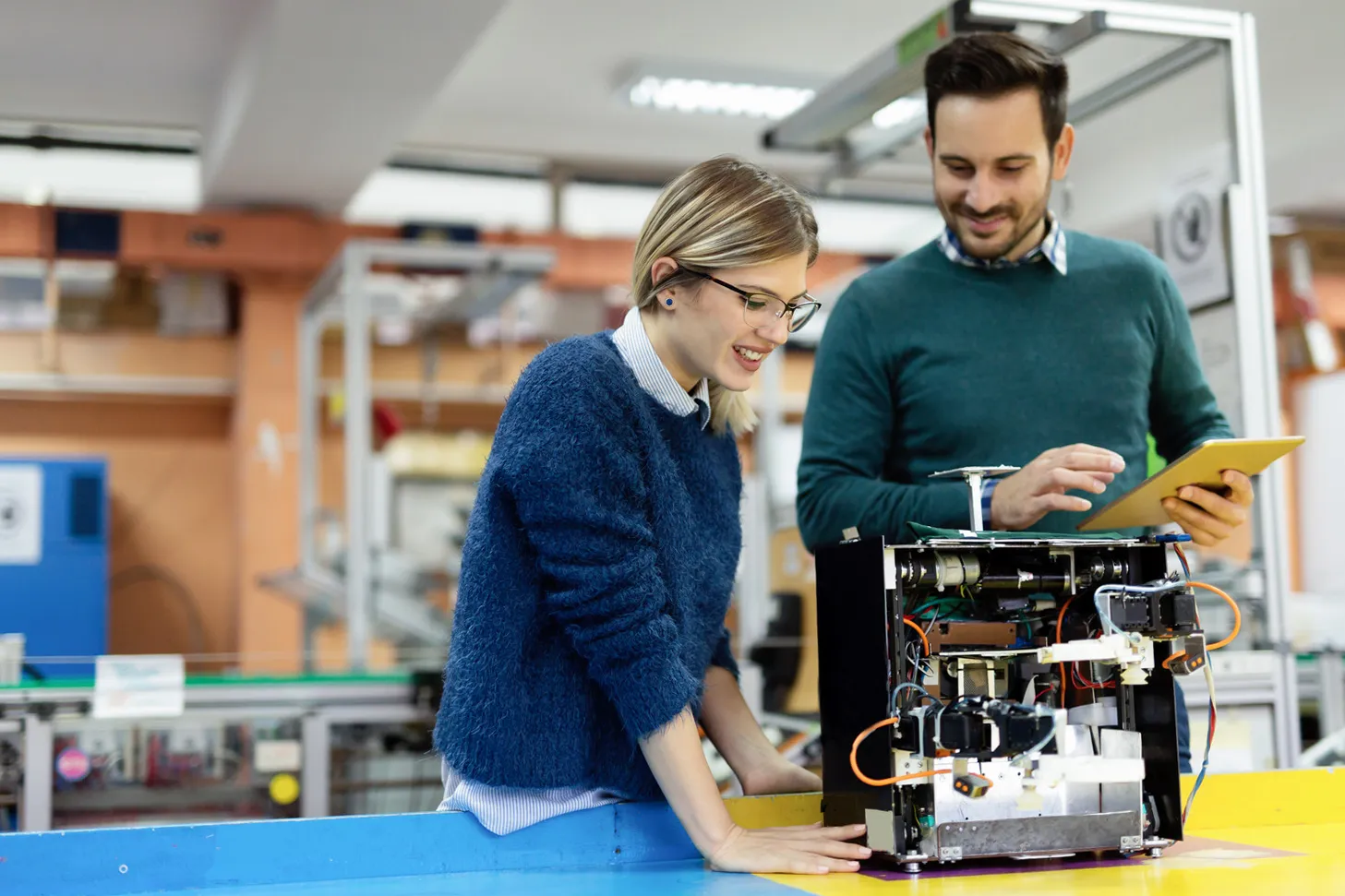A robust nuclear workforce relies on a strong academic pipeline, from undergraduate to graduate studies. However, both levels face challenges that must be addressed through coordinated outreach, curriculum modernization, industry collaboration, and infrastructure investment.
-
Outreach and Talent Attraction:
Meeting the nation’s nuclear workforce needs requires attracting future engineers and scientists—yet many students remain unfamiliar with the field. Proactive outreach to students, families, and educational influencers is key to building interest and growing a robust talent pipeline in the face of strong competition from other STEM disciplines, especially in the area of advanced studies.
-
Academic Capacity and Workforce Diversity:
A continued shortage of faculty, expertise, and resources in undergraduate and graduate programs limits the supply of qualified professionals entering the nuclear field. Expanding access to education and promoting economic mobility— especially for students with limited opportunities—will help strengthen the talent pipeline and increase participation across the nuclear industry.
-
Curriculum Relevance and Interdisciplinary Training:
Academic programs must be regularly reviewed and updated to align with evolving industry needs. This includes integrating emerging topics like nuclear cybersecurity, digital twins and hybrid energy systems, AI, data science, and materials science. Studies should also include interdisciplinary training to prepare graduates for sociotechnical challenges including political, ethical, financial, and environmental influences on the nuclear industry.
-
Industry and National Laboratory Partnerships:
Strong partnerships with nuclear facilities, national laboratories, and industry stakeholders ensure academic programs remain relevant, offer practical experience, and meet accreditation standards. These collaborations also support faculty development through joint appointments, visiting scholar programs, and shared research infrastructure.
-
Specialized Equipment and Facilities:
Nuclear programs require access to costly, specialized infrastructure such as training reactors, radiation and materials labs, and simulation software. Sustaining these investments amid competing institutional priorities can be challenging. Strategic funding, public-private partnerships, and access to shared facilities are necessary to maintain and expand these capabilities.
-
Experiential and Flexible Learning:
Hands-on learning is important at all levels. Programs should incorporate augmented and virtual reality tools, digital simulations and virtual control rooms. Internships and co-op programs with structured pre- and post-engagement phases are also needed. Flexible learning options such as online and hybrid courses can also improve accessibility and attract a broader range of students to advanced nuclear studies.
Strategic Response: From Analysis to Action
Click on the cards below for more information about each priority.
-
Addresses: Outreach and Recruitment + Academic Capacity and Workforce Development

Recommendations:
- Establish a Digital Hub: Develop a centralized platform designed to facilitate outreach, career exploration, and access to educational resources. This hub will highlight nuclear careers across all levels, ranging from skilled trades to advanced degrees.
- Develop Tiered Communication Strategies: Launch targeted campaigns utilizing digital platforms, social media, and virtual reality to highlight nuclear career opportunities, compensation packages, and societal contributions. Tailor messaging for undergraduates and early-career professionals considering graduate studies.
- Integrate Career Awareness into Curricula: Incorporate nuclear career-related content into undergraduate general engineering and science courses to expose students from various disciplines to nuclear applications.
- Promote Positive Perceptions of Nuclear Energy: Implement consistent messaging across institutions to address misconceptions and highlight the role nuclear energy plays in providing a balanced energy portfolio and a reliable energy supply, addressing climate change, stimulating economic growth, and enhancing national security.
- Showcase a Wide Spectrum of Career Role Models: Develop outreach materials that feature modern nuclear professionals with varied journeys and skillsets to spark student interest and increase participation in the field.
- Enhance Career Services and Mentorship Networks: Expand university career services to include nuclear-specific job placement, internship and mentorship programs, and networking opportunities. Organize industry-led webinars and events to connect students with professionals.
- Launch Ambassador and Mentorship Programs: Recruit industry professionals and recent graduates to mentor students via school visits, webinars, and networking.
- Strengthen Recruitment and Support Programs for Veterans and Emerging Talent: Create targeted outreach and mentorship initiatives that leverage the specialized skills of veterans and professionals from nontraditional career paths, helping to drive innovation and expand the nuclear pipeline.
-
Addresses: Curriculum Relevance and Interdisciplinary Training + Industry and National Laboratory Partnerships + Specialized Equipment and Facilities + Experiential and Flexible Learning

Recommendations:
- Create Stackable Credentials and Certificates: Offer modular credentials for nuclear and non-nuclear students that apply toward degrees and demonstrate competencies in topics such as nuclear safety, safeguards and security, quality assurance, and risk management.
- Expand Experiential Learning Opportunities: Provide internships, co-ops, and lab-based learning to undergraduate and graduate students. Use XR tools to simulate nuclear environments and provide students with a practical understanding of various aspects of the nuclear energy industry.
- Integrate Advanced Nuclear Technologies into Curriculum: Revise educational programs to include the latest advancements in technology, reactor designs, and sustainable practice, ensuring alignment with the evolving nuclear industry.
- Integrate Sociotechnical Competencies: Include coursework on the political, ethical, environmental, and financial dimensions of the nuclear energy industry to better prepare students for real-world challenges.
- Develop or Enhance Internship, Mentorship, and Alumni Networks: Create structured internship and mentorship programs and provide networking opportunities with industry representatives.
- Provide Research Placement Opportunities: Establish research opportunities for faculty and students to work with academia and national laboratories such as DOE’s Faculty and Student Teams (FaST) Program and expansion of the Nuclear Energy University Program (NEUP).
- Develop Leadership-Focused Graduate Programs: Create advanced programs that cultivate leadership through strategic thinking, communication, and innovation training.
- Foster Academic Pathways and Transfers: Build articulation agreements between two-year and four-year institutions to support seamless academic progression.
- Support Nontraditional Students and Career Transitions: Provide outreach and academic support to individuals pursuing nuclear careers through alternative pathways—such as adult learners career changers and first-generation students—through partnerships with veteran initiatives and regional colleges.
- Promote Faculty Exchanges and Industry Internships: Enable faculty to stay current with industry trends through exchanges and internships, enhancing teaching and research relevance.
- Establish Tri-Party Advisory Boards: Form boards with representatives from academia, government, and industry to review and update curricula based on emerging technologies and workforce needs.
- Implement Data Collection Program: Collect data on educational outcomes, student outcomes, employment rates, and student/employer satisfaction to guide and refine program strategies.
-
Addresses: Outreach and Talent Attraction + Academic Capacity and Workforce Development

Recommendations:
- Create Centralized Funding Portal: Develop a national platform that lists scholarships, grants, internships, and fellowships specifically for nuclear education.
- Expand Financial Aid and Subsidized Programs: Offer expanded financial assistance in the form of scholarships, stipends, and paid internships, to draw new talent into the nuclear industry and ensure cost is not a barrier to participation.
- Secure Long-Term Funding Commitments: Develop strategic plans to ensure the continuity of funding through stakeholder engagement and adaptive planning.
- Support Educator Development: Provide externships and professional development funding for faculty to enhance instructional quality and industry alignment.
- Pursue Collaborative Grant Opportunities: Encourage joint funding proposals that link colleges, industry, and government to workforce development initiatives.
-
Addresses: Curriculum Relevance and Interdisciplinary Training + Industry and National Laboratory Partnerships + Specialized Equipment and Facilities + Experiential and Flexible Learning

Recommendations:
- Form Inter-Institutional Partnerships: Build coalitions among vocational-technical schools, community colleges, and universities to share best practices, faculty expertise, and curricular resources.
- Host Curriculum Innovation Summits: Facilitate regular gatherings for educators to co-create content, share advancements, and pilot new instructional tools.
- Establish Academic Consortia: Form university consortia (e.g., ORAU University Partners Nuclear Innovation Cluster) to jointly develop and share online courses, lab simulations, and curriculum materials.
- Create an Open Educational Resource Repository: Fund and centralize access to adaptable, high-quality nuclear education content for institutional use.
- Standardize Introductory Courses: Develop open-source foundational courses to ensure consistent knowledge across institutions.
- Establish Industry Advisory Boards: Form advisory boards with industry representatives to review and update curricula based on emerging technologies and workforce needs.
- Leverage Federal Reactor Sharing and Training Programs: Expand the use of programs like Modeling, Experimentation and Validation (MeV) Summer School, Small Modular Advanced Reactor Training (SMART), and DOE Reactor Sharing to provide hands-on reactor training.
- Develop Train-the-Trainer and Pedagogical Programs: Provide faculty and graduate students with teaching skills and digital tools (e.g., digital twins, simulators) to improve instruction.
- Establish Institutional Mentorship Networks: Connect emerging programs with established institutions to assist with curriculum development and resource planning.
- Foster a Culture of Continuous Learning: Promote professional development through workshops, seminars, and adaptive learning strategies.








